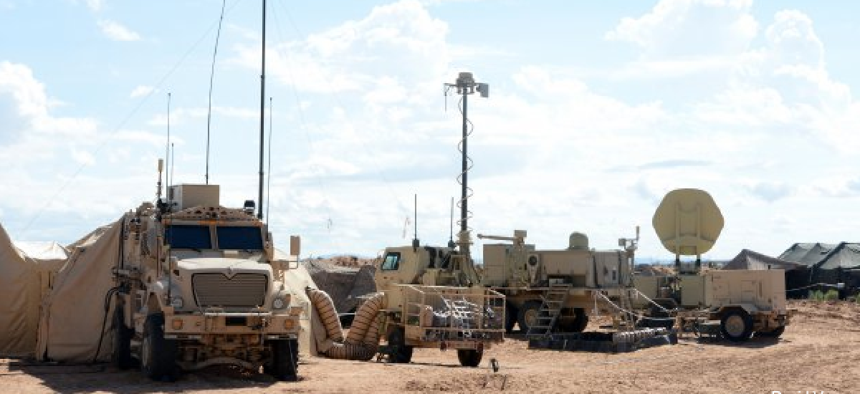Cyber defense front and center at NIE


Connecting state and local government leaders
Officials described the increased focus on cybersecurity and cyber defense at the semi-annual Network Integration Evaluation.
Network defense is job No. 1 for the Army.
"The greatest threat I face as a brigade commander on the battlefield is not [enemy] tanks, snipers or [improvised explosive devices]… [but]defending the network,” Col. Chuck Masaracchia, commander of 2nd Armored Brigade Combat Team, 1st Armored Division, said prior to the start of this fall's Network Integration Evaluation.
The Army’s network defense capabilities will be on display during NIE 16.1 – a semi-annual exercise that evaluates new and current network equipment to determine if it works with joint and coalition partners. NIE began Sept. 25 and runs through Oct. 8.
The NIE network carries unclassified, classified and top-secret traffic, everything from voice and digital to video and databases. In addition to all of that, there's the coalition network, which is the primary means of communications during this NIE. "That is totally new to us," Masaracchia said.
Another new feature is increased wireless networking, which not only reduces the need for cable but also saves setup time.
According to Masaracchia, this year’s NIE is using "is about a third of [the cable] we'd normally have, so we're running secure wireless in here and we're going to be growing as we gain fidelity of the system. As we gain confidence in [wireless's] ability to hold more systems we continually add more systems to the wireless, reducing the cable. Hopefully in the future you'll see hardly any wiring in here."
This year’s NIE is billed as the largest ever, with more than 9,000 U.S. and coalition soldiers and some 3,000 civilians taking part – a significant increase from the 3,500 to 3,800 participants in the past.
With the increase in numbers, the force can afford to create a larger and more formidable red team. "We have a division worth of live and simulated bad guys on the battlespace, which makes this not a near-peer, but a peer or superior threat," said Maj. Robert Richardson, brigade intelligence officer. Red teams “can bring all these systems to bear simultaneously,” he said in regards to modern radios, optics, advanced fire controls, intelligence, reconnaissance and surveillance suites, micro-unmanned aerial vehicles, electronic warfare and threat-computer operations.
"I am more than confident of our force's capabilities to destroy any force on the battlefield -- as long as we can provide mission command," Masaracchia said. “’How we try to defend ourselves and not allow [the enemy] to corrupt the network’ will be crucial to determining the outcome.”
NEXT STORY: Is STARTTLS enough for email security?




